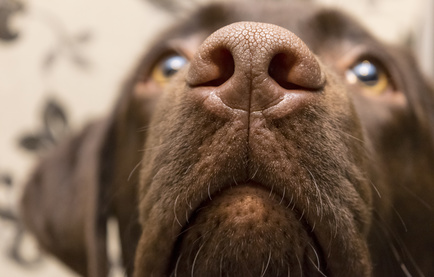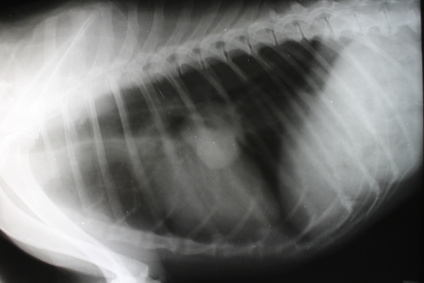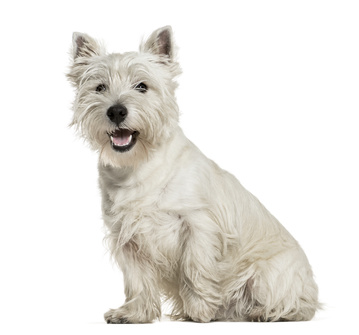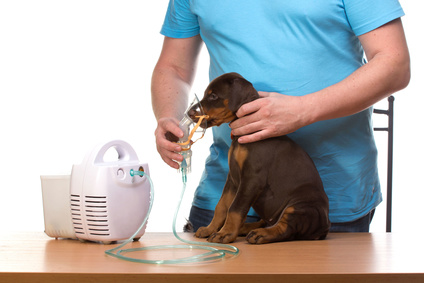
The various lung diseases
Various respiratory diseases are rampant in every season and our animals do not escape !
Our dogs and cats can, Indeed, suffer from various more or less serious respiratory diseases some of which are caused by lung.
The main pulmonary diseases that can affect our pets.

The various lung diseases
Lung infections
As with humans, the lungs of our pets are likely to be affected by infections : viral, most often, or bacterial.
The infection can reach main bronchi, then causing bronchitis, or it can affect the lung parenchyma (bronchioles and alveoli) causing pneumonia.
Symptoms of lung infections cough is often observed, but it is not systematic, including cases of pneumonia. Other symptoms may be shortness of breath, difficulty breathing, possibly fever.
One of the best known lung infections in dogs is kennel cough. This is an infection that can be caused by several viruses and bacteria, mainly including the parainfluenza virus and Bordetella bronchiseptica. This disease is highly contagious and is spread through direct contact or dog to dog by contaminated aerosols expelled when coughing or sneezing. It's called "kennel cough", because it spreads very quickly in kennels type communities, refuges, farms… or in combinations as canine dog training classes, expositions…
A vaccine exists to prevent contamination. Do not hesitate to seek advice from your veterinarian.
Parasitic diseases
Besides viruses and bacteria, some parasites can also nest in the lungs.
When we speak of parasites, we often think of worms living in the intestines. However, some parasites can lodge in other organs including the lungs. This is the case particularly of strongyles. The affected animals are those who attend rural or forest environments. Infection occurs by eating slugs, snails or other contaminated animals. Once in the body, parasites can migrate to the lungs causing symptoms of cough and shortness of breath.

Other lung parasites are also mushrooms. The respiratory system can be colonized by fungi, Candida or Aspergillus eg, although pulmonary forms are rare. chronic cough and shortness of breath are the main symptoms.
L’œpulmonary edema
Pulmonary edema is an accumulation of fluid in the lungs. It is not a matter, strictly speaking, lung disease but, most often, consequences of heart failure. Other causes may also cause pulmonary edema : some poisoning or smoke inhalation or gas including.
In acute pulmonary edema, the liquid is suddenly up in the lungs : the animal can no longer breathe, he can cough, or be in real distress and respiratory unconscious. White or pink foam can come out of his mouth. This condition is a vital emergency. If you observe any of these symptoms in your pet, consult a veterinarian immediately.
Lung tumors
Tumors can also develop in the lungs : either primary tumors of one or more lung lobes, or tumor metastases located in other organs. Coughing and shortness of breath may then be the main symptoms, but also loss of appetite, weight loss, or a loss of form.

Asthma or bronchospasm
As humans, Asthma can exist in cats. It can also be called bronchospasm because it corresponds to an involuntary contraction of bronchi. This is manifested by wheezing, coughing and shortness of breath as crises often. The cause is probably allergic, as in humans.
relatively rare, this diagnosis usually comes after excluding other common causes of respiratory problems.
Pulmonary fibrosis
Pulmonary fibrosis is a specific condition characterized by changes in lung tissue which fibrosent and stiffen. This disease affects mostly older dogs, from 6 years, with a predisposition among westies, while other breeds can be affected.
Pulmonary fibrosis manifested by cough, heavy breathing, and above all a marked exercise intolerance, that is to say that the dog ran out of steam at the slightest effort.

Diagnosis
The various lung diseases often have common symptoms, mainly including cough and shortness of breath. It will be important to be able to make a differential diagnosis, that is to say, the cause of lung disease, in order to provide treatment.
For this, your veterinarian will rely primarily on a clinical examination and careful auscultation. In some cases, it can also perform additional tests : x-rays, Ultrasound, scanner, biopsy or bronchoalveolar lavage. This examination involves injecting saline into the trachea under general anesthesia and then re-sucking to recover the germs and cells present in the bronchus. This test is very useful for targeting infectious agents and optionally to susceptibility.

Treatment
Treatment will depend, of course, of the disease in question. Symptomatic treatments exist : anti-inflammatory drugs, corticosteroids, antitussifs, bronchodilators. Antibiotic treatment may also be necessary. Treatments may need to be given to long-term chronic diseases.
Your veterinarian may prescribe a treatment as aerosols, the advantage being that the active ingredients are delivered directly into the airways and lungs of the animal.

§
In all cases, symptoms such as cough, difficulty breathing or abnormal shortness of breath should alert you and bring you to consult your veterinarian. As with many diseases, the prognosis is better when treatment is implemented early. In addition, preventive treatments exist to prevent certain diseases, such as regular deworming, vaccination against kennel cough or for a heart treatment. Do not hesitate to seek advice from your veterinarian.
Author : Dr. Helen Blondel. Illustrator : Dr. Caroline Allard – Vetup®
